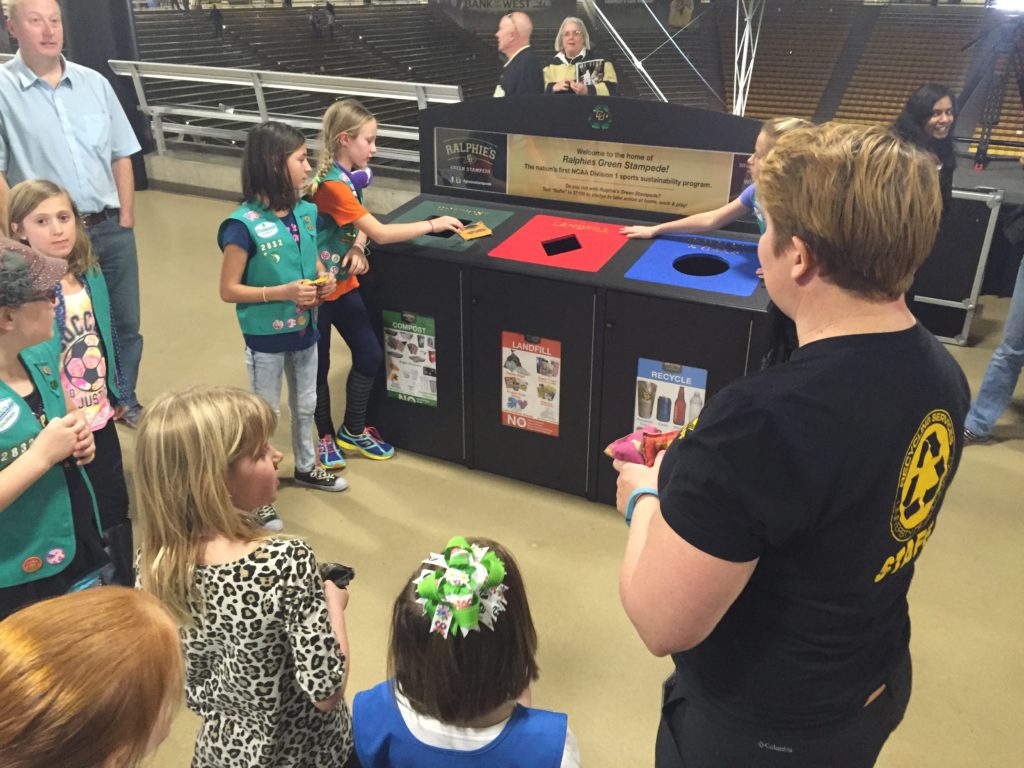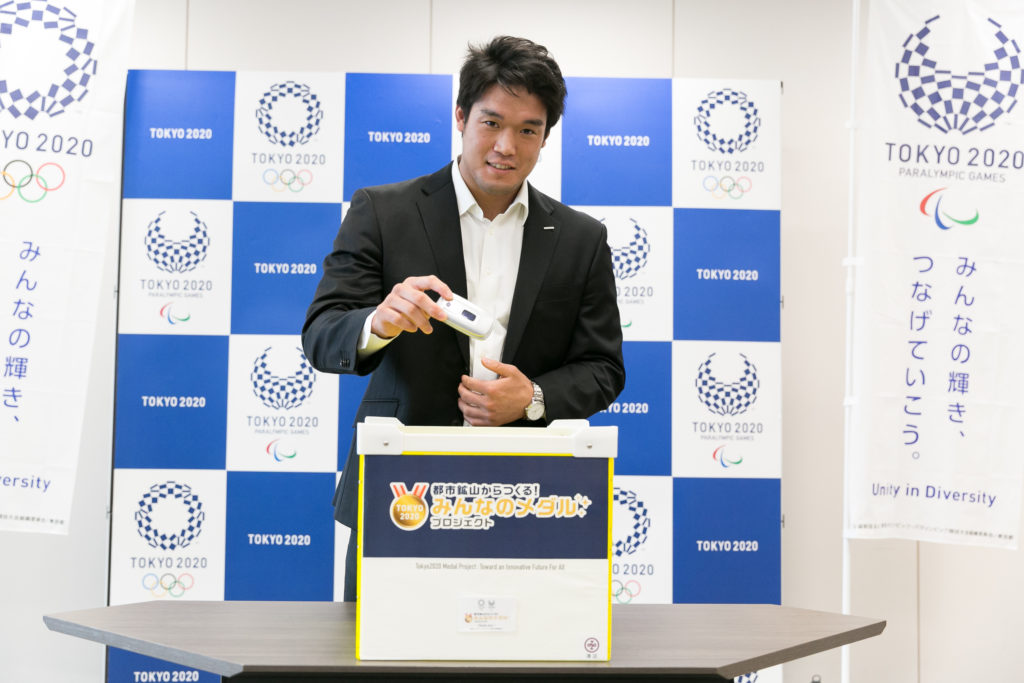Playing for the Planet
How the sports industry is embracing sustainability
Posted On: April 30, 2019 By :The simple acts of swinging a tennis racket, throwing a football or kicking a soccer ball have complex consequences. From the carbon footprint of attendees driving to the U.S. Open and the materials used to make athletes’ uniforms to the straws in spectators’ drinks and the cans discarded by fans, sports events have a wide-reaching impact on the environment. But now, colleges and leagues, individually and collectively, are ramping up their sustainability efforts with innovations intended to offset environmental impacts and create new standards for sports organizations.
“Thanks to the work of Allen Hershkowitz, who spearheaded the environmental work we see across sport now as well as organizations like the Green Sports Alliance, there is a strong network of leagues, teams and governing bodies working together and learning from each other to continue to push the needle,” said Lauren Tracy, director of strategic initiatives for the U.S. Tennis Association.
Late to the Game?
While the environmental movement began in the 1960s and 1970s—prompted by Great Lakes pollution, Bikini Atoll hydrogen bomb testing and California coastal oil spills, among other factors—the sports industry arguably joined it only in 2004, when the Philadelphia Eagles formed an ecological partnership with the National Resources Defense Council, where Hershkowitz served as a senior scientist. In 2005 Major League Baseball also teamed up with the NRDC, followed by the NBA in 2007.
By March 2011, sports officials and environmentalists had enough momentum to form the Green Sports Alliance, where Hershkowitz—also the founding director of Sport and Sustainability—served as president for several years. (Most recently, the New York Yankees named him the team’s environmental science advisor, a new position in the sports industry.)
Today, the Green Sports Alliance oversees seven key programs—energy, food, procurement, transportation, venue, waste and water—as it convenes stakeholders from around the world. “GSA’s mission and vision is the ability to convene and improve how we influence the fans and the folks engaged in what we do in the sports arena,” said Executive Director Roger McClendon. “It’s entertainment, but also valuable lessons—what kind of culture do we want to propagate? It’s important for us as leaders to make sure we are focused on those value‐added things for the next generation.”
The Green Sports Alliance is hardly alone in its mission. The United Kingdom, for example, has both Sustainability in Sport and the British Association for Sustainable Sport, while the U.S. Department of State has founded the Sports and Sustainability Initiative. In Europe, the Sustainable Innovation in Sport Forum brings together global sports leaders to help fight climate change.
The Power of the Pac‐12
On college campuses, where many students are environmentally conscious, sports sustainability efforts have been strong. In 2017 the Pac‐12 began hosting an annual Sustainability Conference, presenting awards for its Zero Waste Challenge, in which campuses compete with each other in pursuit of a zero waste (i.e., nothing sent to a landfill) home game each season. Last year’s overall winner was the University of Colorado at Boulder, thanks to its 91.82 percent stadium diversion rate at football games, including more than 8,700 pounds of compost and 3,900 pounds of bottles and cans.

“Sustainability is very important for us, something we take a great deal of pride in,” said Colorado Athletic Director Rick George. “We want to be leaders in this area, and we are certainly excited about being recognized in this way.”
Jamie Zaninovich, the Pac‐12’s deputy commissioner and chief operating officer, points out that college campuses are fertile ground for sustainability efforts. “Students are coming to our 12 campuses expecting broad and high‐profile sustainability initiatives in recycling, solar, food diversion. They come to campus and say, ‘Where’s the recycling bin?’” he said. “This a response to demand from student bodies, who are in tune to the environment.”
To further help schools achieve goals, last year the conference created the Pac‐12 Team Green working group, which includes one representative each from athletics and sustainability at each of the conference’s schools to share best practices and provide guidance.

Run, Kick, Toss, Slide—and Win
Whether it’s the International Association of Athletics Federations or the International Olympic Committee, major federations and governing bodies are also making major changes in their approaches to sustainability. Take, for example, U.S. Ski & Snowboard, which issued an official statement of sustainability in 2017, aligned itself with Protect Our Winters, and set sustainability goals for the 2019 FIS Snowboard, Freestyle and Freeski World Championships in Park City, Utah.
“One goal was to minimize the number of single‐use water bottles on all competition venues” at the championships, said Tom Webb, director of marketing and communications for USSA. “We achieved this through all sites having education on the waste caused by the competitions, and refillable water stations being easily accessible to all event goers. Additionally, waste was a primary focus area for all resorts, using personnel and equipment to, where possible, make the event sites waste‐free.”
Major League Soccer offset emissions from the 2018 All‐Star Game in Atlanta by investing in improved cookstoves for rural Kenya and in Atlanta’s Historic Westside Gardens, in addition to financing the planting and maintenance of 200 trees in the city. The USTA, meanwhile, recently celebrated the 11th anniversary of its U.S. Open sustainability program with initiatives including straw‐free cocktails by Grey Goose and 90 percent of all paper products made out of recyclable and/or compostable materials.
“During the past 11 years, more than 7 million fans have interacted with our greening efforts,” said Tracy, “whether it’s through our recycling and composting efforts, using mass transit to attend the event, or even forgoing a straw in their drink. We hope that through our work, they are learning to make better choices each day to lessen their environmental footprint long after they leave the event.”

At the 2018 NFL Draft Experience in Arlington, Texas, volunteers helped fans divert waste through compost and recycling at the large fan festival that accompanied the draft; other NFL endeavors included planting six new trees for each of the 246 players drafted. (Trees became an issue in the lead-up to the 2019 draft when Nashville planned to chop down 21 cherry trees to make way for the event’s main stage. After community protest, the city lowered the count to 10 and relocated them instead of destroying them.)
Then there’s the IOC, which late last year joined the United Nations Framework Convention on Climate Change (UNFCCC) in announcing a partnership in the Sports for Climate Action Initiative, in line with the Paris Agreement. The UNFCCC objective is to “stabilize greenhouse gas concentrations in the atmosphere at a level that would prevent dangerous anthropogenic interference with the climate system.”
“Addressing climate change is everyone’s responsibility, and the IOC treats it very seriously—as an organization, as the owner of the Olympic Games and as the leader of the Olympic movement,” said IOC President Thomas Bach in a statement announcing the agreement. “Sport is about action, and today the world needs urgent action to limit the rise of global temperatures.”
Uniforms and Unified
Companies are also becoming increasingly creative in sustainability efforts. In 2018 Adidas announced new, environmentally conscious uniforms for the University of Miami Hurricanes football team. The first ones featured repurposed and upcycled materials in collaboration with Parley for the Oceans. More than 70 percent of the yarn in the uniforms was made from fishing nets and other nylon marine waste.
Also made from recycled ocean plastic are Sea Chairs, stadium seats designed by stadium and arena architect Dan Meis to address the global problem of 8 million tons of plastic ending up in the ocean each year. “Our stadiums are filled with plastic,” said Meis, who added that he saw a potential business in finding a use for that material.
Whether, it’s fans enjoying a game from one of these seats, urging recycling or providing incentives for environmental responsibility, sustainability in sports is increasingly becoming a unified approach. “When we think about what we’re trying to do, there are two core pillars,” said McClendon. “It’s around how we build, especially in stadiums and designing the facilities up front to make sure they are as efficient as possible; it’s much smarter than what was done in the past by leveraging technology to offset the impact. The second part revolves around how we engage our fans, our partners and our supply chain in order to bring the communities together. It’s an opportunity for individuals to do the right thing.”
From Metals to Medals

When athletes win a gold, silver or bronze medal at the 2020 Olympic Summer Games in Tokyo, they’ll also get a piece of a keyboard, cellphone or computer chip. That’s because organizers are creating all of the Olympic and Paralympic medals from materials recovered from discarded and obsolete electronic devices.
Tokyo 2020 has been asking Japanese citizens and municipalities to donate their electronic devices, an effort that has included more than 11,000 drop-off centers and hosted events, with more than 1,500 municipalities taking place. As of October, organizers had received 100 percent of the materials they needed to make bronze medals, 54 percent of the goal for gold and 44 percent for silver. They expect to reach the final goals sometime this year. Faster, higher, stronger, indeed.
Posted in: Baseball, Collegiate Sports, Feature Story, Football, Main Feature, Olympic Sports, Paralympic Sports, Soccer, Sustainability, Tennis, Winter Sports